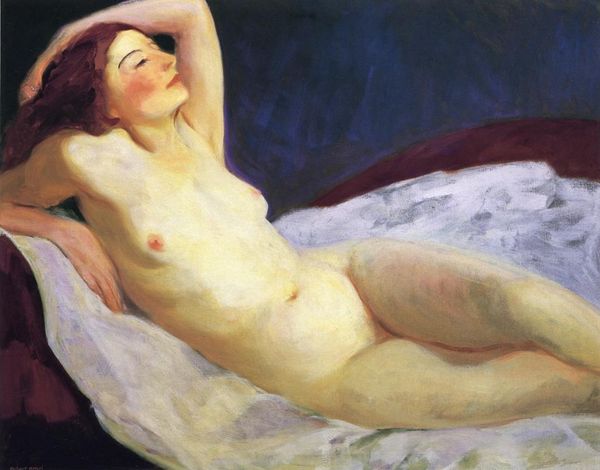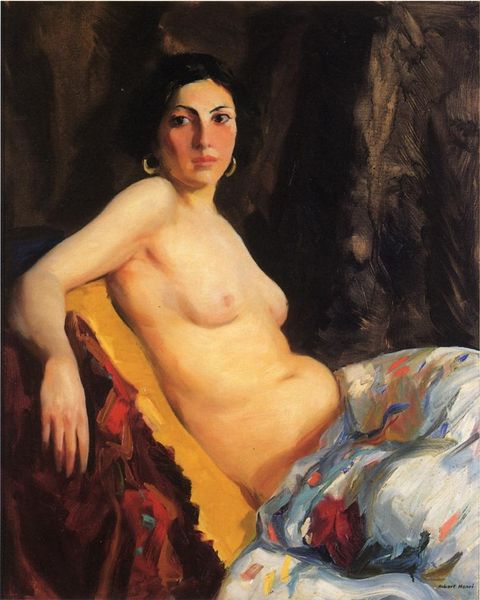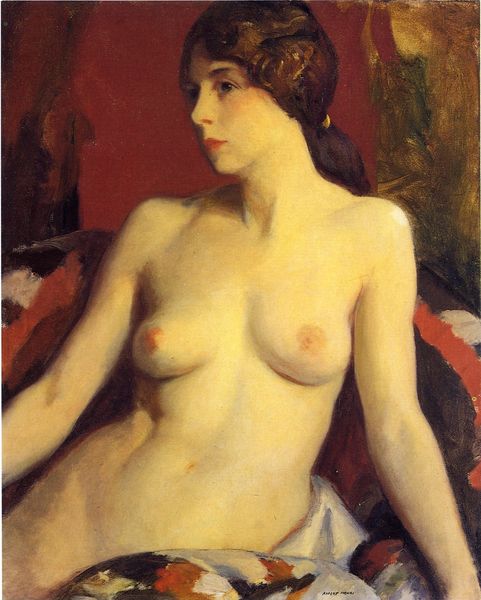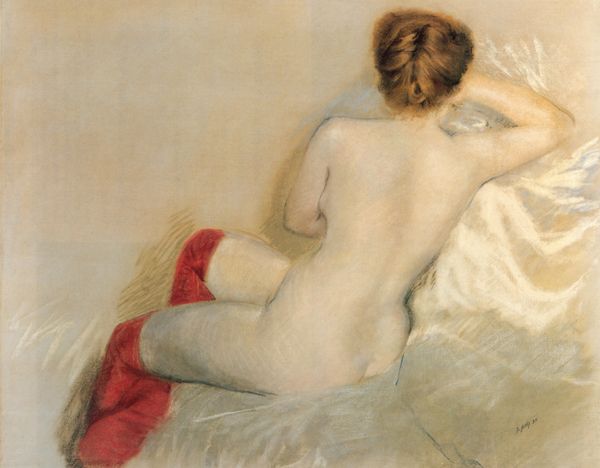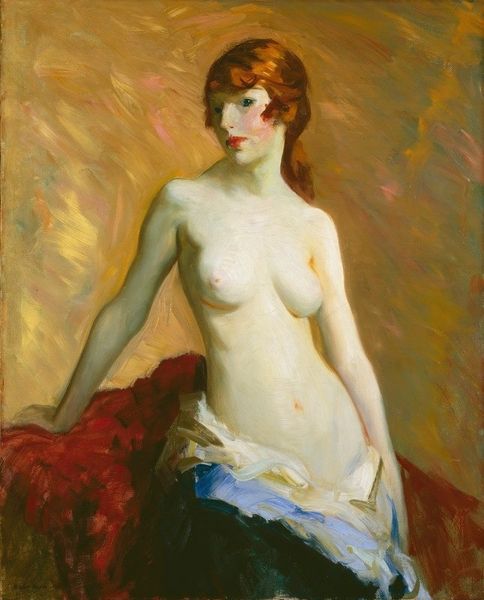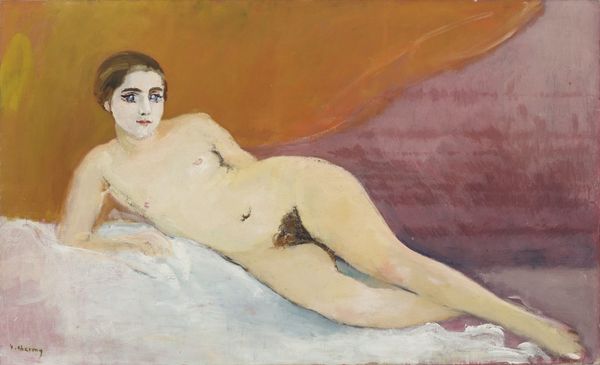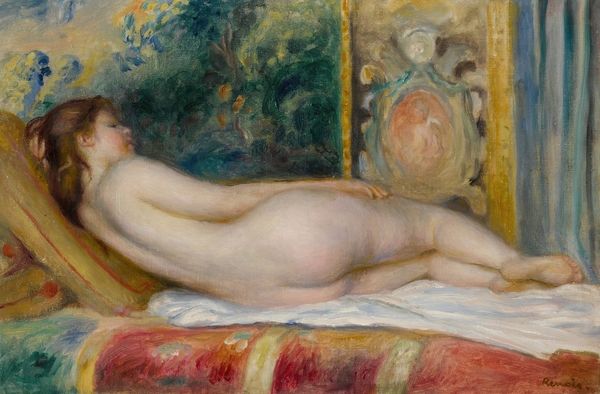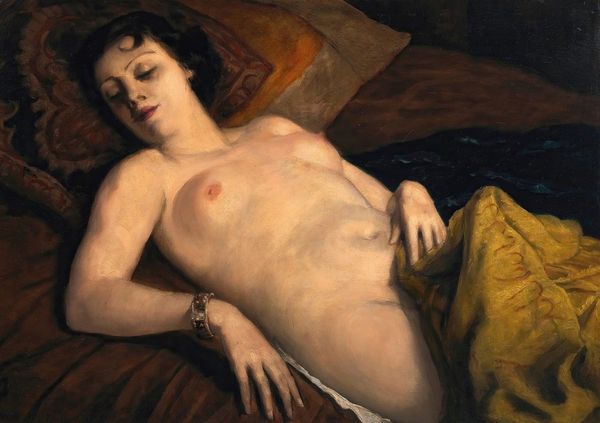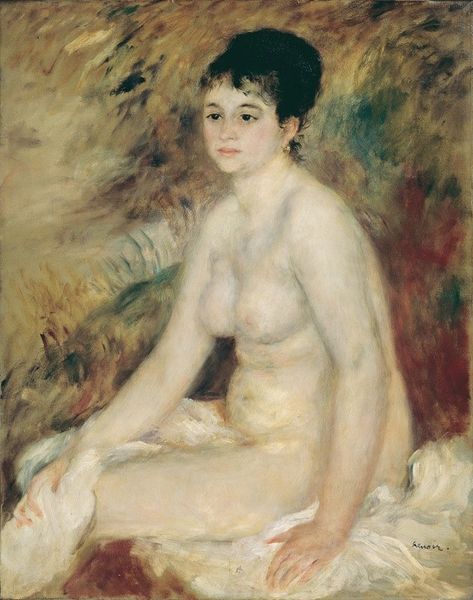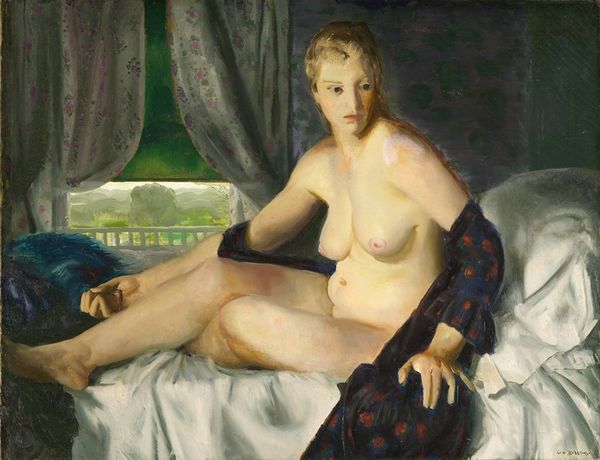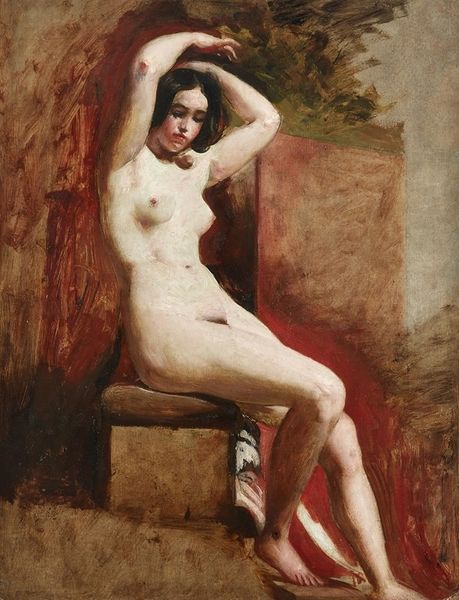
painting, oil-paint
#
portrait
#
painting
#
oil-paint
#
figuration
#
oil painting
#
portrait drawing
#
genre-painting
#
facial portrait
#
nude
#
portrait art
#
realism
Copyright: Public domain
Editor: So, here we have Robert Henri's "Viv Reclining (Nude)," painted in 1916 using oil on canvas. There’s something very direct and confident in the model’s gaze. I'm curious – what aspects of early 20th-century American art culture does this piece speak to you? Curator: This painting, presented during a period of intense social and artistic change, particularly addresses shifting views on the female figure in public art. Prior to this, idealized forms were the norm, often sanctioned by academic institutions and the elite. What we see in Henri's work is a move toward a more naturalistic, some might even say democratic, portrayal. How does that sit with your perception? Editor: I see that shift, definitely. It’s less about an unattainable ideal and more about capturing a real person. I guess I’m still a little stuck on the gaze. Was that also part of challenging artistic and social norms at the time? Curator: Precisely. Before, the female nude often occupied a passive role, an object to be admired, sometimes without agency. The direct gaze challenges this. It positions Viv as an active participant in the exchange, aware and assertive, not merely a passive model. Consider how that assertion was received by viewers of the time and even how different that could be depending on class, race or gender of the person looking at it. Editor: That's fascinating! I hadn’t really thought about the layers of socio-political context at play when this was first exhibited. Curator: And consider the venue! Was this painting accepted in prestigious academic circles, or shown instead in galleries with looser criteria, such as Alfred Stieglitz's "291"? Context always matters when interpreting art’s impact. Editor: Definitely food for thought. I appreciate learning about the social impact it had in shaping new perspectives. Curator: Likewise. Thinking about public roles of paintings keeps interpretations and meaning alive.
Comments
No comments
Be the first to comment and join the conversation on the ultimate creative platform.

